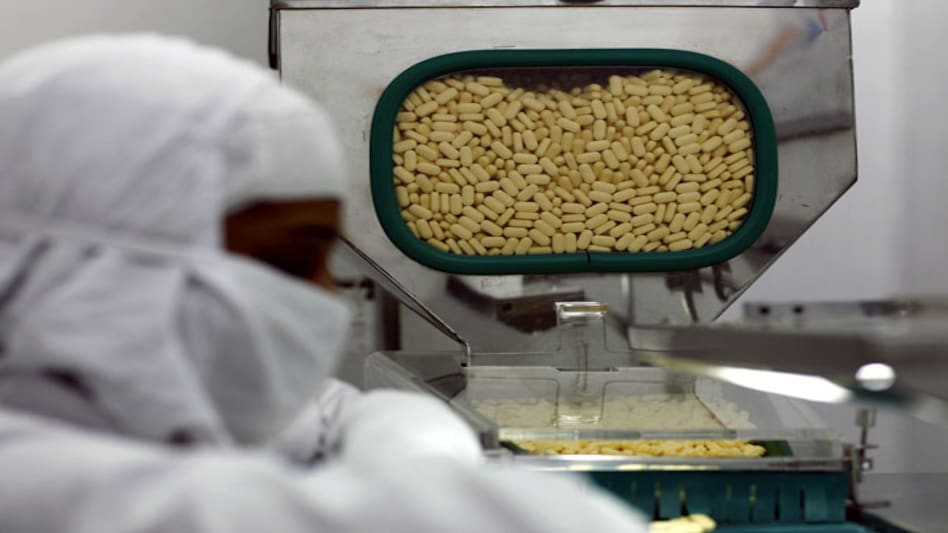

The Indian pharmaceutical industry faces a crucial new year. Until now, the local industry has largely followed a growth model that focused on launching cheap generic versions of branded innovator drugs made by global pharmaceutical companies.
But, increasingly this is becoming an unviable model and companies may no longer be able to depend on this strategy, as most blockbuster drugs will be off-patent by 2015.
So, what should the Indian drug makers do?
Critical for survival in this era will be investment in what the pharmaceutical industry calls "limited competition drugs" and differentiated products.
Limited competition drugs are generic drugs that are either difficult to make or are not made by many players. Differential products are existing molecules but drugs with different dosage or administration mechanism.
Already, Indian companies such as Dr Reddy's , Sun Pharmaceutical, Lupin and Zydus Cadila have started doing this. This was one reason why many Indian pharmaceutical companies showed better profitability and growth in 2013 especially in markets like the US and some branded generics markets like Russia, South Africa and India.
Dr Reddy's, for instance, launched limited competition drugs like decitabine, azacitidine, divalproex and donepezil. This seemed to have helped. Despite its bulk drugs division not doing well, its sales and profitability for the quarter ended September 30, 2013, were the highest ever. It recorded a consolidated net profit of more than Rs 690 crore during the quarter. Its global generics gross margins expanded by more than 500 basis points from a year earlier, helped also by a weak rupee.
Analysts say the local drug industry must sharpen its focus on innovation and emerging markets. "With growth picking up in other sectors, fund flow into the pharmaceutical sector could get restricted and it will become important for companies to invest in innovation," says Surajit Pal, pharmaceutical analyst at brokerage Prabhudas Lilladher.
Looking back, 2013 will probably be remembered for the lows Indian drug makers touched. Leading Indian companies like Ranbaxy and Wockhardt came under the glare of the US Food and Drug Administration (FDA) during the year. In May, Ranbaxy pleaded guilty to felony charges relating to manufacturing and distribution of certain adulterated drugs made at two units in India and agreed to pay $500 million to US authorities as penalty. This followed a series of actions taken by the US FDA, which in 2008 had banned the import of 30 generic drugs produced by Ranbaxy at its Dewas (Madhya Pradesh) and Paonta Sahib (Himachal Pradesh) plants for violating manufacturing standards.
There were concerns also regarding regulations governing clinical trials and the imposition of price control on 348 essential drugs in June.
A spokesperson for Pfizer in India recently told Business Today that a lack of clarity and inconsistency in Indian regulations will lead to a shift of clinical trials to other countries with a developed, scientific and consistent regulatory framework. "In the absence of clinical trials in India it will become difficult to register new drugs, leading to Indian patients being denied access to new innovative medicines," the spokesperson said. US giant Merck & Co does not even list India among its top 10 priority markets (Brazil and China are on the list), which figure prominently in its recently announced global initiative to sharpen its commercial and research and development focus.
In 2013, the Indian pharmaceutical industry also lost some of its leaders. These included Kallam Anji Reddy, the founder of Dr Reddy's and one who is largely credited for bringing research into focus in the local industry, and Jagdish Kantisarup Saxena, the founder of Elder Pharmaceutical and the one credited for launching niche products targeted at women with a calcium supplement product called Shelcal.
The year 2013 also experienced a slowdown in growth. Analysts estimate that the local pharmaceutical industry is growing at around seven per cent. However, they predict that by the second half of 2014, which will be one year since the imposition of price control, the sector could hope for growth bouncing back to 10 to 11 per cent.
Copyright©2024 Living Media India Limited. For reprint rights: Syndications Today